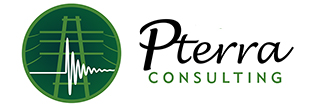Voltage uprating is a technology that is actually a combination of techniques known for many years by folks in the line design area, for instance from the Towers, Poles and Conductors (TP&C) Line Design Subcommittee of the IEEE. It is a possible planning alternative to techniques which aim to increase the current capacity of transmission lines, known collectively as current uprating. Both voltage and current uprating share the common objective of utilizing the existing right-of-way and structures to transfer more power.
From a planning perspective, voltage uprating is an option that works alongside such others as converting AC lines to DC (including the new “tripole” concept), and increasing phase order, which makes it a candidate for planners looking to make the most out of existing infrastructure. So, the $64 dollar question is: “Why isn’t it planned for more often?”
In one view, the lack of application may come from the lack of planning confidence that the technology is viable for specific projects. More than current uprating, or for that matter, AC-to-DC conversion, the feasibility and cost of voltage uprating is dependent on a detailed assessment of the existing line. There are precious few actual examples, some of which include: Fairmount-Port Angeles and Bell-Boundary, both in BPA, 115 to 230 kV; multiple lines in Public Service of Colorado (PSCo), 115 to 230 kV; and Jamestown-Grand Forks in North Dakota, 115 to 230 kV. In the example of PSCo, there is clearly an advantage in a collective company experience of uprating several lines. The cost experience appears to indicate that a 115 to 230 kV uprate would come in at about 70% the cost of a complete rebuild; a good planning figure, but actual costs can vary significantly.
In recent work by Pterra Consulting, we had an opportunity to include voltage uprating amongst the planning options. The work involved planning for long-term development of an urban, congested area, where new right-of-way was difficult, if not, impossible to obtain. The load growth required doubling capacity on several 115 kV lines. Uprating to 230 kV allowed the uprated circuits to connect to the existing 230 kV system, saving on the cost of new transformers. With a 30% cost savings over re-building the lines, voltage uprating proved to be a cost-effective option that became an integral component for the overall plan.
But one sample doesn’t make a statistic, and it would probably take a few more case studies and practical experience to get voltage uprating into the planning mainstream.
The link between planner and line designer needs to be strong in order for voltage uprating to be a viable planning option. As stated in a TP&C panel session held at the 2005 General Meeting, Power Engineering Society, 12-16 June 2005, in San Francisco, California USA:
- for short-term planning, quick turnaround on feasibility assessments for voltage uprating are important,
- and for long-term planning, the voltage uprate must be part of a robust solution (fits multiple future scenarios), cost less than a line rebuild, and cost about the same or less than the per capacity MW addition of current uprating techniques.
For the full pdf of the panel session, click here.
